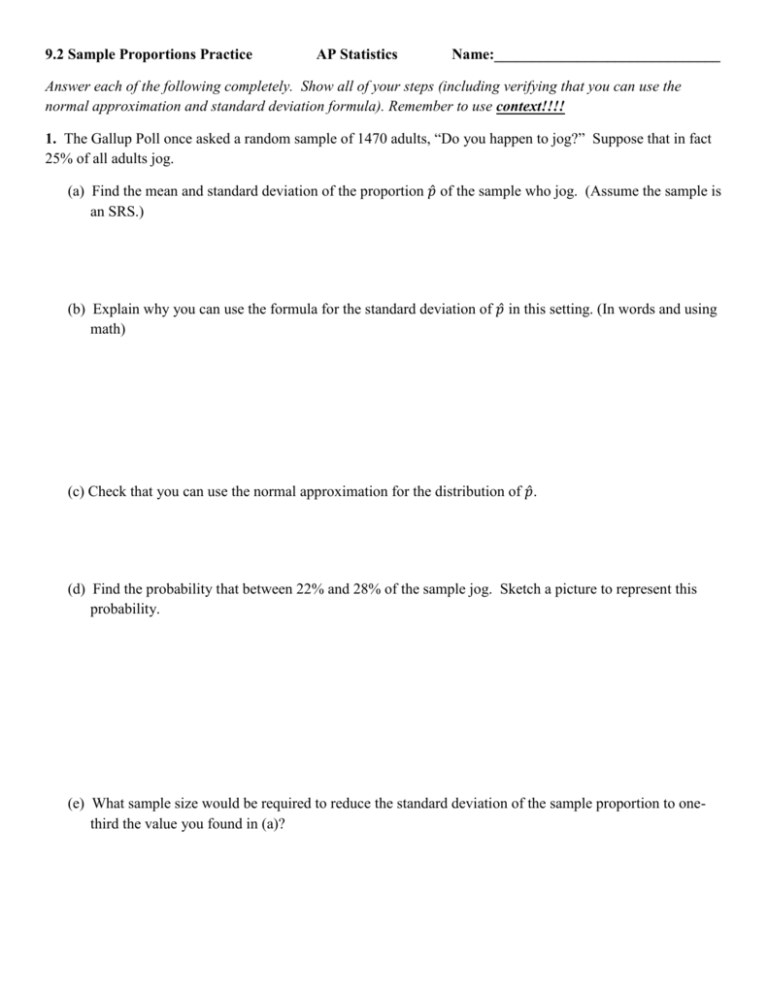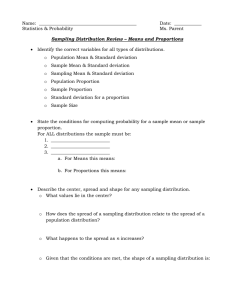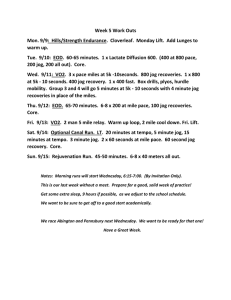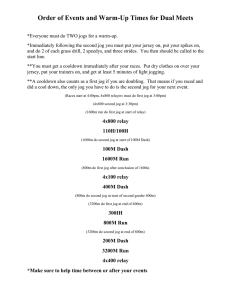9.2 Sample Proportions Practice AP Statistics Name: Answer each of
advertisement

9.2 Sample Proportions Practice AP Statistics Name:______________________________ Answer each of the following completely. Show all of your steps (including verifying that you can use the normal approximation and standard deviation formula). Remember to use context!!!! 1. The Gallup Poll once asked a random sample of 1470 adults, “Do you happen to jog?” Suppose that in fact 25% of all adults jog. (a) Find the mean and standard deviation of the proportion 𝑝̂ of the sample who jog. (Assume the sample is an SRS.) (b) Explain why you can use the formula for the standard deviation of 𝑝̂ in this setting. (In words and using math) (c) Check that you can use the normal approximation for the distribution of 𝑝̂ . (d) Find the probability that between 22% and 28% of the sample jog. Sketch a picture to represent this probability. (e) What sample size would be required to reduce the standard deviation of the sample proportion to onethird the value you found in (a)? 2. Are attitudes toward shopping changing? Sample surveys show that fewer people enjoy shopping than in the past. A recent survey asked a nationwide random sample of 2400 adults if they agreed or disagreed that “I like buying new clothes, but shopping is often frustrating and time-consuming.” The population that the poll wants to draw conclusions about is all U.S. residents aged 18 and over. Suppose that in fact 60% of all adult U.S. residents would say “Agree” if asked the same questions. What is the probability that 1500 or more of the sample agree? 3. According to a market research firm, 52% of all residential telephone numbers in Los Angeles are unlisted. A telephone sales firm uses random digit dialing equipment that dials residential numbers at random, whether or not they are listed in the telephone directory. The firm calls 500 members in L.A.. What is the probability that at least half the numbers dialed are unlisted?











